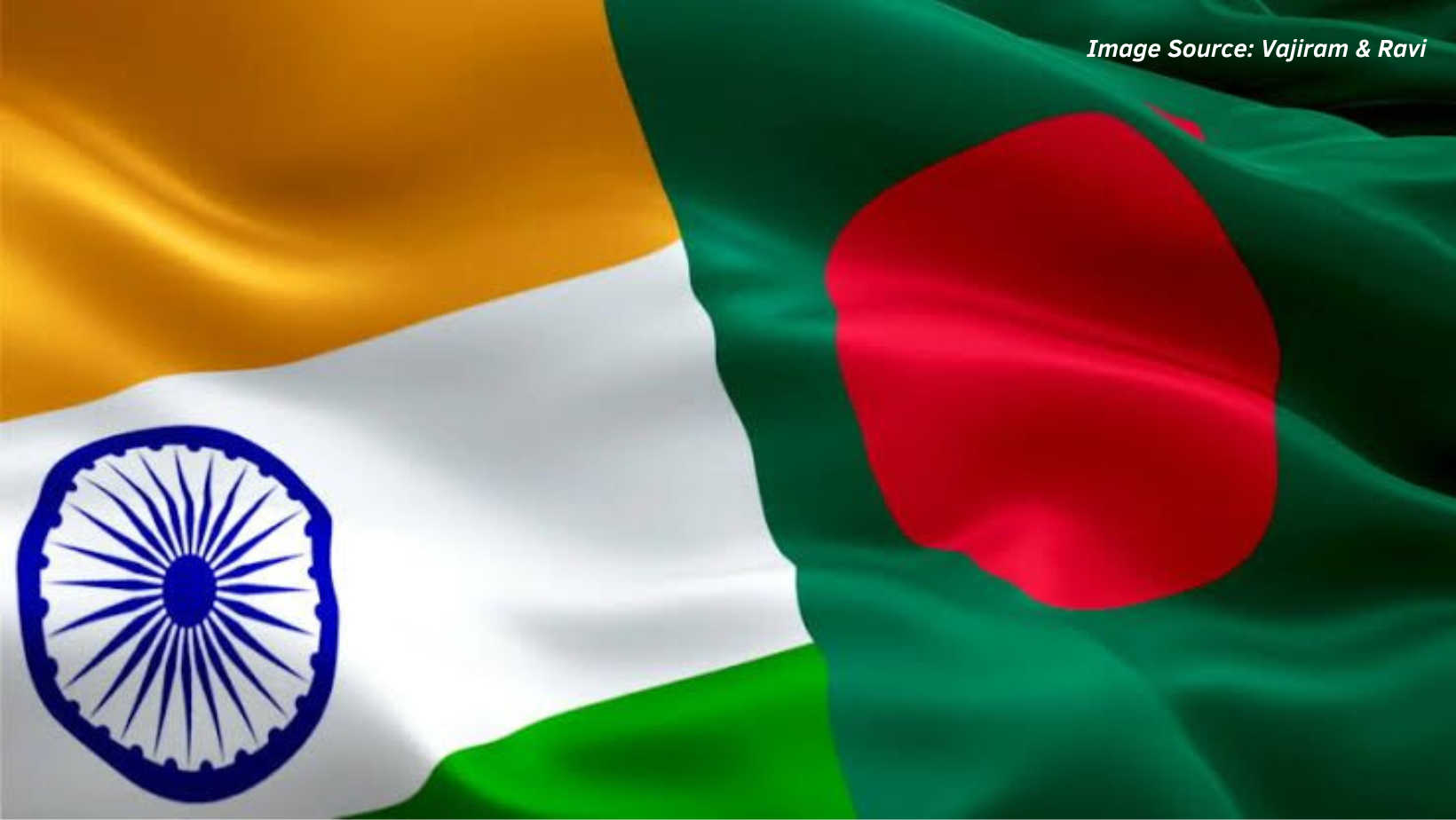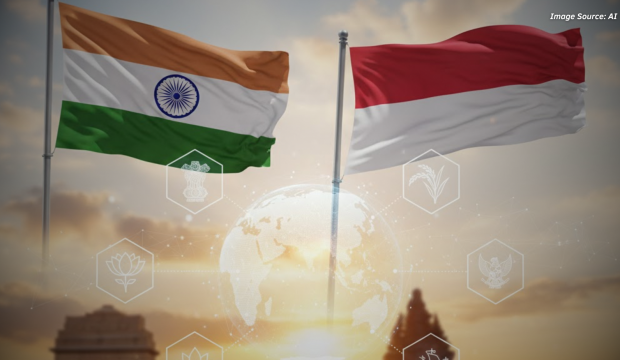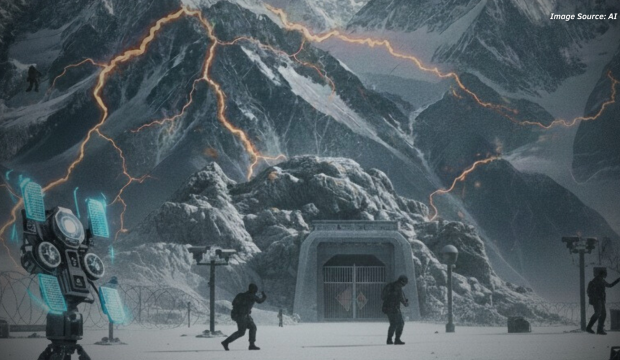Background
India and Bangladesh have shared a long history since the liberation of Bangladesh. Bangladesh plays a crucial role in the strategic and security aspects of India so India needs to keep a close look at the political situation in its neighbourhood. India considers Bangladesh not only a neighbouring country but also a close ally in dealing with the security concerns in the North Eastern Region.[1]
On January 7, 2024, Bangladesh held elections, and Sheikh Hassina won a landslide win to consecutively become the country’s prime minister for a record fourth term.[2] Sheikh Hasina will be the longest-serving Prime Minister in the history of Bangladesh after winning the elections. The major opposition party, Bangladesh National Party (BNP) opposed the elections with other parties with the allegations that Awami League is not conducting free and fair elections. Awami League won the election on 223 seats out of a total of 300 seats in the Bangladeshi Parliament, even though the voter turnout was about 40% in this election.[3] Regarding the accusations of non-democracy against the Awami League during the election, neither China nor India has spoken based on the Non-Interference Policy in the country’s internal matters to respect the sovereignty.[4]
The relations have been in a golden era for India since the Awami League has been in power in Bangladesh since 2009. However, at the same time, India has been facing the issue of being a larger nation in the neighbourhood. Hasina has been best at making the North Eastern region insurgency-free and curbing the Jihadis movement across the border. Various agreements between both countries turn out to be favourable from energy deals, and transit ports to defence cooperation, however, a few areas of concern can be spotted in the relationship such as Teesta River water sharing which has been on the negotiation table for a long time which should be worked on a faster pace from Indian stand. In the Rohingya refugee issue, India has also been struggling with the surge of refugees from Myanmar in the North Eastern region concerning the smuggling of weapons and drugs has become a prominent threat. A joint effort regarding the management of refugees between India and Bangladesh would be a better way to look out for a solution. Border killings are also one of the prominent issues as it is considered one of the most violent borders.[5]
Bangladesh is a notable neighbour that shares cultural ties with India and engages in trade with it. From various angles, India is perceived to have benefited from the Awami League’s victory. Sheikh Hasina’s government has maintained the balance between Indian and Chinese influence.[6] However, the drastic increase in the number of investments in infrastructure and trade agreements between Bangladesh and China has been raising concerns for India.
India aims to establish a more secure and wealthy South Asian area while fortifying its diplomatic connections with its neighbours through financial assistance. Bangladesh has become India’s main neighbouring partner, greatly increasing its involvement in infrastructure development in terms of funding and project kinds, according to Ramesh, deputy managing director, of EXIM (Export-Import) Bank of India.[7]
Infrastructure Projects
Bangladesh is placed at a very strategic location for transport and navigation from India’s point of view. Thus, India and Bangladesh have been involved in major infrastructure projects like Matabari Port and the Akhaura- Agartala Rail Link. Given Bangladesh’s high population density and increased need for hinterland transportation from the port to the city, there are many vital railway lines. These developments mostly cover Dhaka and the port cities. However, they are also strategically highly important because they provide a continuous and established connection to Agartala or the rest of the Indian mainland.[8]
Akhaura-Agartala rail link was inaugurated on 1st November 2023, building connectivity between Bangladesh and the North Eastern region through Tripura. This route also connects to the Chattogram and Mongla ports of Bangladesh. This rail link will enhance the cooperation and connectivity in the region from trade to a people-to-people level. This will help bypass the long, narrow, congested Siliguri corridor called Chicken Neck. This rail link will provide ease in travelling by reducing the distance from 1,600 kilometres to 500 kilometres and time duration from 31 hours to 10 hours approximately.[9]
India is also looking forward to the Matarbari deep sea port of Bangladesh which is building with the assistance of Japan. This port might be a game changer for building the important industrial route linking Dhaka and the North Eastern region of India as it is capable of handling larger cargo. This project majorly assists Japan and India in balancing the influence of China in South Asia through the Belt and Road Initiative (BRI). This project also boosts the connectivity of regional trade networks.[10]
Trade Agreements
The Comprehensive Economic Partnership Agreement (CEPA) was announced in 2022 which is a crucial agreement for India and Bangladesh. CEPA is not on the official negotiation level yet. After the election in Bangladesh, both countries will be looking forward to continuing the proceeding of the agreement which includes a joint working group set up in October 2023 to lay down the plan. This agreement will play a major role in trade and investments between both countries. CEPA will build a strong and effortless trade movement with services, professionals and investment by eradicating and reducing the trade tariffs on various goods.[11] This agreement will impact the bilateral trade deficit figure of the countries and work in favour of both by reducing the trade barriers. The export figures from India to Bangladesh in 2020 were USD 7.91 Billion which significantly increased in 2021 to USD 14.1 Billion whereas, in 2022 it was 13.8 Billion.[12] However, the trade deficit in the bilateral trade between India and Bangladesh is about USD 12 billion as per the Bangladesh Bank. The imports from India are worth USD 14 billion and imports from Bangladesh are worth USD 2 Billion[13]
With this Bangladesh-Bhutan-Indian-Nepal (BBIN)– Motor Vehicle Agreement is also a negotiated draft. This agreement deals with the motor vehicle movement across the border and the economic development of the area.[14] BBIN-MVA implementation will promote collaboration between countries through transport via not only roads but ports as well which will enhance regional integration with institutional mechanisms with a significant increase in trade. BBIN-MVA will also allow the citizens of one country to move to another country with their vehicle this will also increase tourism.[15] Bhutan has not ratified the document due to the project’s environmental impacts on the country whereas other countries have ratified it.[16]
Involvement of China in Bangladesh
China and Bangladesh were not on good terms after Bangladesh’s independence but eventually after establishing diplomatic relations in 1976, China became Bangladesh’s principal armament supplier (around 75 per cent of Bangladesh’s arms come from China[17]) as well as a vital ally.
Although Indian security experts have long monitored this relationship, Bangladesh’s recent purchase of the price of USD 203 million of two Type 035G diesel-electric attack Chinese submarines[18] and two frigates named- Abu Bakar and Ali Haider[19], has raised questions about the potential consequences for India’s security. However, Sheikh Hasina has assured that India has always been prominent in consideration and Bangladesh must remember its contributions to the liberation war.
Security analysts from Bangladesh claim that acquiring submarines is more political than tactical. They believe that the military forces provide stability for political parties in that nation. This also applies to the current Awami League government. To keep strong relations with the armed services, the administration adopted the Forces Goal 2030. Additionally, Bangladesh is buying many weapons from China. It is attempting to make its navy a three-dimensional power.[20] Submarines are seen as essential. The technology aboard this vessel is antiquated and its commissioning is intended to raise military morale. Bangladesh has also asked for help from China in building the submarine base with the facilities of wharves, barracks, repairing dock and ammunition depot. This is assigned to a Chinese company named Poly Technologies Inc.[21]
China-Bangladesh’s increased trade percentage should be a concern to India as the trade gaps between India and Bangladesh are being filled by China. After the 2024 election, Bangladesh and China decided to expand the scale of trade specifically the export of Bangladeshi goods with fewer tariffs.[22] The export figures from China to Bangladesh were USD 15.1 Billion in 2020, in 2021 it increased to 23.8 Billion and in 2022 it was USD 26.8 Billion.[23] Earlier, China was not interested in South Asia whereas, now China is significantly showing its influence in Bangladesh with its projects, duty-free trade and investments especially with BRI to establish its presence in the Indo-Pacific region and contain India.
Defence Cooperation
Defence cooperation between both countries can be observed since the Liberation of Bangladesh, the spotlight has shifted to India’s US$500 million credit to Bangladesh for the purchase of defence hardware, particularly Coast Guard patrol boats and communication equipment. There are other factors to take into account in addition to the apparent strategic goals. Bangladeshi businesses can join the original equipment manufacturer’s supply chain. Bangladesh has the potential to be a significant market for Indian defence items. Many international corporations are establishing their assembly and manufacturing facilities in India due to the “Make in India” campaign, and the country may grow to be a significant supplier of weapons. It will be convenient for Bangladesh to purchase weapons from a nearby neighbour. Additionally, this puts the nation in a stronger bargaining position, enabling it to discuss topics like technology transfer. In the long run, this might be beneficial.[i]
Both nations’ defence services take part in cooperative training programs, medical support, and drills. The two forces’ joint counterterrorism exercise, Sampriti, has finished seven rounds of training. In November 2017, the eighth one was held at the Counter-Insurgency and Jungle Warfare School in Vairengte, Mizoram.
Way Ahead
However, with all the above successful agreements and projects, there are a few issues affecting the relationship between India and Bangladesh adversaries: The Teesta River, Trade loops, and the Rohingya crisis, being a few of them. These issues have built resentment among Bangladesh’s people as Teesta River Water Sharing majorly impacts the agricultural sector and results in expensive cultivation. Building two canals under the Teesta River also impacts the biodiversity of the region and is against international norms of transboundary river management which impacts Indian public perception. Neighbouring countries play a primary role in the territorial security of a country. India needs to engage with the neighbouring countries on the principles of the Gujral Doctrine to flourish the relationships with a win-win situation.
India has to make the most of its cultural, geographic and historical connections with Bangladesh. Increasing Chinese influence in the Indian Neighbourhood is a significant security concern. China has been spreading its tentacles in the Indian Ocean through investments in infrastructure and defence projects. This puts India in a substantial stance to counter-balance the Chinese influence in Bangladesh with various infrastructure investments and defence cooperation. India-Bangladesh relations have flourished since the Awami League was in power. The recent win of the Awami League could be seen as a better opportunity for the development of long-lasting friendship.
Conclusion
Awami League coming to power impacts India-Bangladesh ties majorly on the positive side as Sheikh Hasina has always considered Delhi as a prominent partner from the liberation times. Both countries share similar thoughts in dealing with Jihadis and terrorism on the borders. Due to allegations of extra-judicial killings and violations of human rights, several Western governments want to place further sanctions on Bangladeshi officials. India, however, has been opposing this move, calling it counter-productive and pointing out that any Western insistence on democratic principles may drive Dhaka even closer to China.
DISCLAIMER
The paper is author’s individual scholastic articulation and does not necessarily reflect the views of CENJOWS. The author certifies that the article is original in content, unpublished and it has not been submitted for publication/ web upload elsewhere and that the facts and figures quoted are duly referenced, as needed and are believed to be correct.
References
- Anbarasan Ethirajan, “Bangladesh Elections: Why India Matters across the Border,” BBC News, January 2, 2024, https://www.bbc.com/news/world-asia-india-67860458.
- Tariq A. Karim, “The Outcome of the Election in Bangladesh and What Lies Ahead for Its Foreign Policy,” The National Bureau of Asian Research (NBR), January 11, 2024, https://www.nbr.org/publication/the-outcome-of-the-election-in-bangladesh-and-what-lies-ahead-for-its-foreign-policy/.
- Nayanima Basu, “Hasina Win Will Further Enhance Ties with India, Trade Deal to Get Boost, but Challenges Remain,” News, January 8, 2024, https://news.abplive.com/india-at-2047/bangladesh-election-2024-sheikh-hasina-win-bangladesh-india-ties-trade-deal-challenges-cepa-pm-modi-abpp-1655140.
Snigdhendu Bhattacharya, “India Reiterates That Upcoming General Election Is Bangladesh’s Domestic Matter,” The Diplomat, November 20, 2023, https://thediplomat.com/2023/11/india-reiterates-that-upcoming-general-election-is-bangladeshs-domestic-matter/.
- Onaeem, “Bangladesh Election 2024: What Role Will India Play?,” Atlantic Council, June 15, 2023, https://www.atlanticcouncil.org/blogs/southasiasource/bangladesh-election-2024-what-role-will-india-play/.
- Syed Munir Khasru, “Elections in Bangladesh: Why Both India and China Are Backing Sheikh Hasina,” The Indian Express, January 7, 2024, https://indianexpress.com/article/explained/explained-global/bangladesh-elections-india-china-back-sheikh-hasina-9096924/.
- Ankit Saxena, “India’s Infrastructure Diplomacy: Bangladesh Emerges as Top Partner for Development Projects in South Asia Region,” Swarajya, July 19, 2023, https://swarajyamag.com/infrastructure/indias-infrastructure-diplomacy-bangladesh-emerges-as-top-partner-for-development-projects-in-south-asia-region.
- “Bangladesh Major Receiver of India’s Infrastructure Development Projects,” The Business Standard, July 19, 2023, https://www.tbsnews.net/world/south-asia/bangladesh-major-receiver-indias-infrastructure-devlopment-projects-667730.
- ANASUA BASU RAY Chaudhary and Sohini Bose, “Significance of the Akhaura-Agartala Rail Link for India and Bangladesh,” orfonline.org, November 22, 2023, https://www.orfonline.org/expert-speak/significance-of-the-akhaura-agartala-rail-link-for-india-and-bangladesh.
- Mahua Venkatesh, “Why Bangladesh’s Matarbari Port Is a Game Changer for India and the Region,” Indianarrative, September 3, 2023, https://www.indianarrative.com/economy-news/why-bangladeshs-matarbari-port-is-a-game-changer-for-india-and-the-region-151077.html.
- Ibid
- “India Exports to Bangladesh2024 Data 2025 Forecast 1988-2022 Historical,” India Exports to Bangladesh – 2024 Data 2025 Forecast 1988-2022 Historical, accessed February 11, 2024, https://tradingeconomics.com/india/exports/bangladesh.
“Bangladesh Begins Trade with India in Rupees amid Dollar Crunch,” EFE Noticias, July 11, 2023, https://efe.com/en/economy/2023-07-11/bangladesh-begins-trade-with-india-in-rupees-amid-dollar-crunch/#:~:text=According%20to%20the%20Bangladesh%20Bank%2C%20the%20country%20has,financial%20year%2C%20the%20country%20exported%20%242%20billion-worth%20products.
- Ibid
- Quamrul Hasan and Sajid Karim, “Motor Vehicle Agreement between Bangladesh Bhutan India and Nepal: Implications and Challenges,” Academia.edu, January 13, 2016, https://www.academia.edu/20243379/Motor_Vehicle_Agreement_between_Bangladesh_Bhutan_India_and_Nepal_Implications_and_Challenges.
- Rinchen Kinznag, “Why Bhutan Quit the BBIN Motor Vehicle Pact,” South Asia Monitor, November 1, 2021, https://www.southasiamonitor.org/spotlight/why-bhutan-quit-bbin-motor-vehicle-pact#:~:text=After%20exhaustive%20engagement%20with%20stakeholders%2C%20Bhutan%20dropped%20out,affecting%20Bhutan%E2%80%99s%20security%2C%20environment%2C%20tourism%20and%20cultural%20sensitivity.
“China–Bangladesh Strategic Linkages,” orfonline.org, May 11, 2021, https://www.orfonline.org/expert-speak/china-bangladesh-strategic-linkages.
- Brian Hart Matthew P. Funaiole, “Submarine Diplomacy,” A Snapshot of China’s Influence along the Bay of Bengal, November 17, 2023, https://features.csis.org/snapshots/china-submarine-diplomacy/.
- Nurul Islam Hasib, “4 Military Agreements Signed with China,” bdnews24.com, May 12, 2014, https://bdnews24.com/bangladesh/2014/05/12/4-military-agreements-signed-with-china.
- Ibid
- “China Fast-Tracks Key Defence Projects in Bangladesh,” South Asia Monitor, July 23, 2020, https://www.southasiamonitor.org/china-watch/china-fast-tracks-key-defence-projects-bangladesh#:~:text=Dhaka%20is%20also%20founding%20a,Chinese%20Corvette%20named%20BNS%20Sangram.
- “Bangladesh, China Agree to Expand Scale of Bilateral Trade: Business,” BSS, January 17, 2024, https://www.bssnews.net/business/168562.
- “China Exports to Bangladesh2024 Data 2025 Forecast 1992-2022 Historical,” China Exports to Bangladesh – 2024 Data 2025 Forecast 1992-2022 Historical, accessed February 16, 2024, https://tradingeconomics.com/china/exports/bangladesh.
- Dipanjan Roy Chaudhury, “India, b’desh Sign First Defence Deal under $500M LC,” The Economic Times, September 11, 2022, https://economictimes.indiatimes.com/news/defence/india-bdesh-sign-first-defence-deal-under-500m-lc/articleshow/94059712.cms.














































